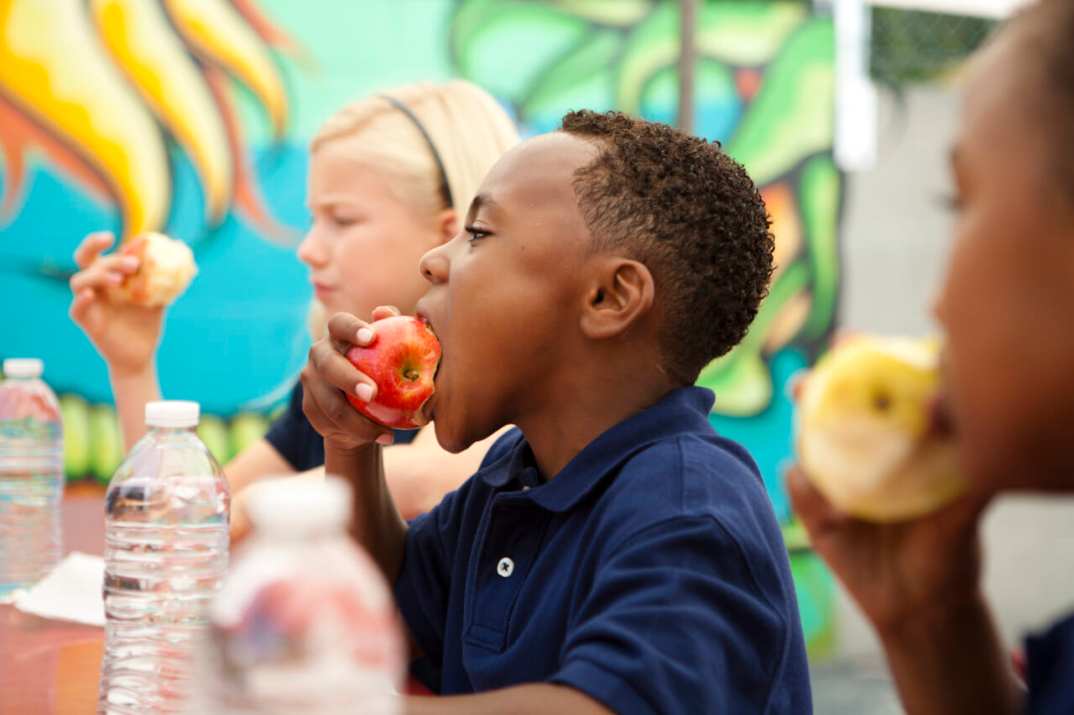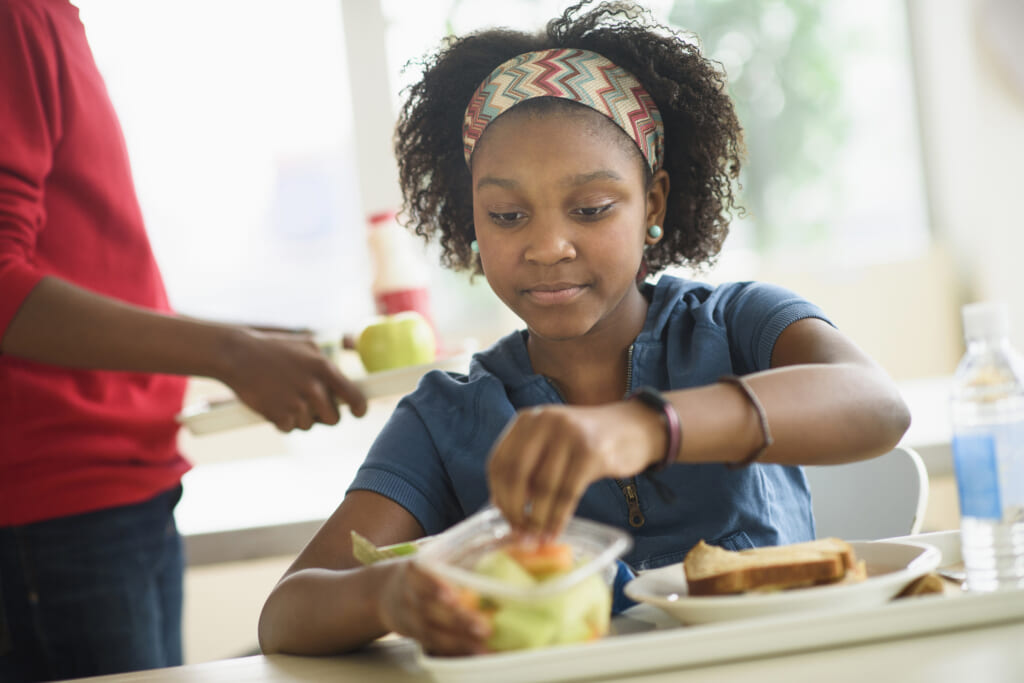To help fight racial inequality among our children, look at nutrition in school
OPINION: Research shows that access to school meals can actually lead to better grades in math and reading and that hungry stomachs are a distraction from learning.

Editor’s note: The following article is an op-ed, and the views expressed are the author’s own. Read more opinions on theGrio.
It is no secret that decision-makers fight an uphill battle to ensure an equal starting point for every child who enters an American classroom. Less widely known is that the socioeconomic inequities they’re fighting actually carry over into our school cafeterias and to kids’ school breakfast and lunch trays.
This September, the White House will hold a Conference on Hunger, Nutrition, and Health—the first of its kind in 50 years—with a key focus on the disproportionate impact that underserved and marginalized communities face when it comes to nutrition. A conversation about real equity—and subsequent policy and action—cannot happen without the topic of food in schools.
Over time, Americans of all races, religions and political affiliations have come to believe that a high-quality education remains an ongoing imperative for every child in every community to transcend inequity and poverty of opportunity—shadows of the American dream. That includes access to—and education about—the food our students eat.
The concept of food as a driver for equity is nothing new. During his 1964 Nobel Peace Prize acceptance speech, the Rev. Martin Luther King Jr. opined: “I have the audacity to believe that peoples everywhere can have three meals a day for their bodies, education and culture for their minds, and dignity, equality, and freedom for their spirits.” In January 1969, when the Black Panther Party served its first free breakfast at St. Augustine’s Church in Oakland, Calif., a member of the party posed the question, “How can a person be expected to pay attention and learn about history, math, science, and other subjects that are abstract to reality when [their] mind is concentrating on a very real and concrete problem? Where is the next meal coming from?”

To be clear, this isn’t a problem of ability. We already have the tools to ensure that every student has the proper conditions to learn—and receive three nourishing meals a day. We just need the political will and civil courage to make this access a critical standard for schools across the country. In fact, we’ve addressed school meals in a national, record-setting way before. The first White House Conference on Food, Nutrition, and Health, held in 1969, resulted in the expansion of the National School Lunch Program (NSLP) and the solidification of the National School Breakfast Program, seeded by the Black Panthers.
I am a child of two Black, college-educated, economically-stable parents who never qualified to participate in the free-or-reduced food program in school—an exception to the system. The civil rights issue of school meals is borne of a moral mandate to eradicate the need for exceptions. The widening racial gaps in education outcomes and the conditions that ensure educational participation are equitable—food, housing, and health care—are proof that we have not yet actualized the spirit of the 1954 Brown v. Board of Education decision that mobilized a vision of equal rights for all students regardless of race, place or income.
While layers of racial oppression and systemic racism in our nation run deep, and teaching of this history has emerged as a political lightning rod, there has to be a starting point on which all leaders, no matter their political leanings, can move forward. Party discord haunts equalizing access to the American idea and negates the humanity of “justice for all.”
Let’s start with school nutrition. We can all agree that feeding our children is an ethical imperative, but research shows that access to school meals can actually lead to better grades in math and reading and that hungry stomachs are a distraction from learning. Nourishment is key to making sure students are focused on their studies, not empty bellies. After all, when parents cannot pay for school meals and lunch debt becomes a barrier to accessing school food, not only do the kids suffer, but whole communities suffer. Students from Black and Latinx households are more than twice as likely to experience food insecurity, resulting in perpetuating an imbalance of “the great equalizer”—one that results in better overall outcomes for white students than students of color.
Without ensuring all children have access to nourishing food, we sacrifice a whole generation of future learners and leaders by failing to provide basic needs for life, liberty, and the pursuit of happiness. The upcoming White House Conference—and the nation’s leaders in attendance—are presented with an opportunity: If we want to talk about equality and justice, we must talk about the food our children eat, no matter where they come from.

Dr. Robert S. Harvey is the president of FoodCorps and is an educator, strategist, advocate for justice and equity, and author. Prior to joining FoodCorps, he served as a K-12 school superintendent and chief academic officer, chief operating officer, and elementary school teacher and leader.
TheGrio is FREE on your TV via Apple TV, Amazon Fire, Roku, and Android TV. Please download theGrio mobile apps today!


